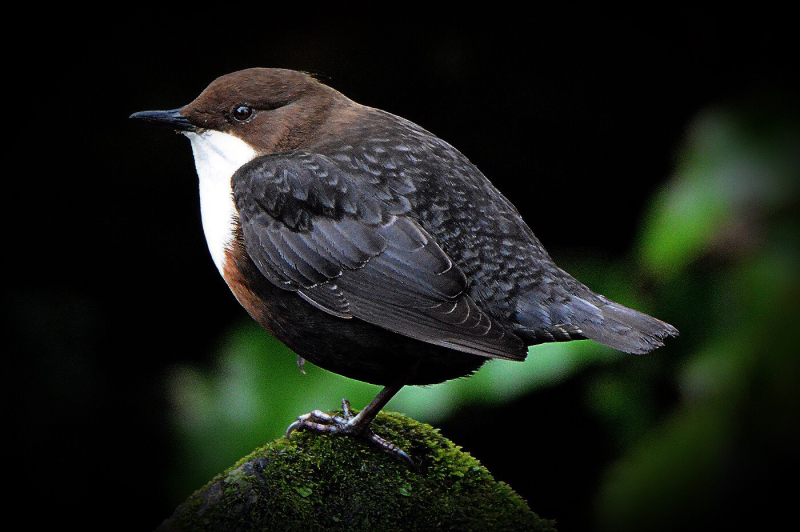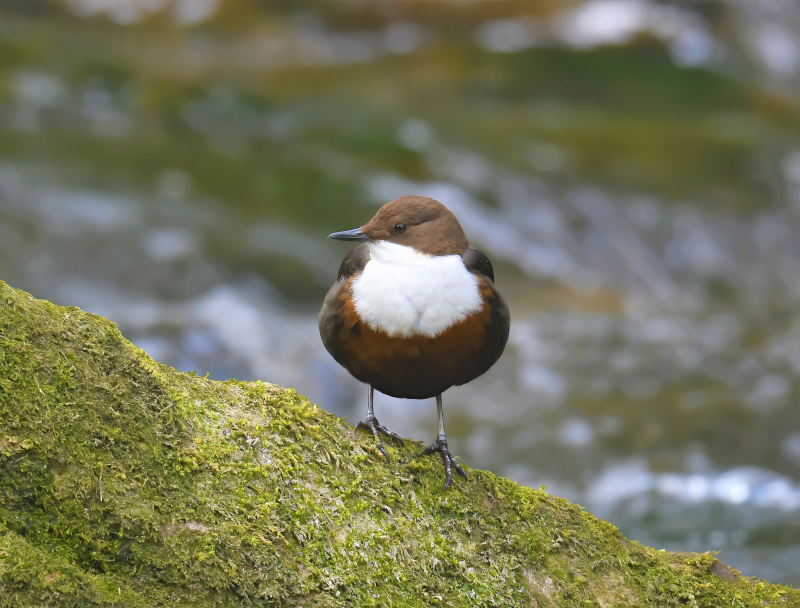Dipper
The Dipper, also known as Cinclus cinclus, is a small, plump, and short-tailed bird that belongs to the family Cinclidae. It is a unique bird species that is known for its ability to dive and swim underwater, making it one of the few bird species that can survive in aquatic habitats.
Dippers are found in fast-flowing rivers and streams in the mountainous regions of Europe, Asia, and North America. They have a characteristic bobbing motion when perched on rocks or branches near water, which is believed to help them see their prey more clearly.
Dippers have a unique physical appearance that sets them apart from other bird species. They have dark brown or black feathers, a white throat and breast, and a stubby, conical bill that is perfectly adapted for underwater feeding. They also have large, powerful legs and feet that are designed for swimming and holding onto rocks in fast-flowing water.
Dippers are highly adapted to their aquatic environment. They have a waterproof coat that keeps them warm and dry when submerged in cold water. Their feathers are dense and oily, which traps air and creates a layer of insulation. They also have a transparent third eyelid that protects their eyes while underwater.
Dippers feed primarily on aquatic insects, such as mayflies, caddisflies, and stoneflies. They forage by diving underneath the water's surface, where they use their sensitive feet to feel for their prey on the riverbed. Once they find an insect, they use their strong bills to capture and eat it.
Dippers are monogamous and breed in the spring. They build their nests in rock cavities or hollow trees, and lay 3-5 eggs that hatch after approximately two weeks. Both parents share the responsibility of incubating the eggs and feeding the chicks.

















